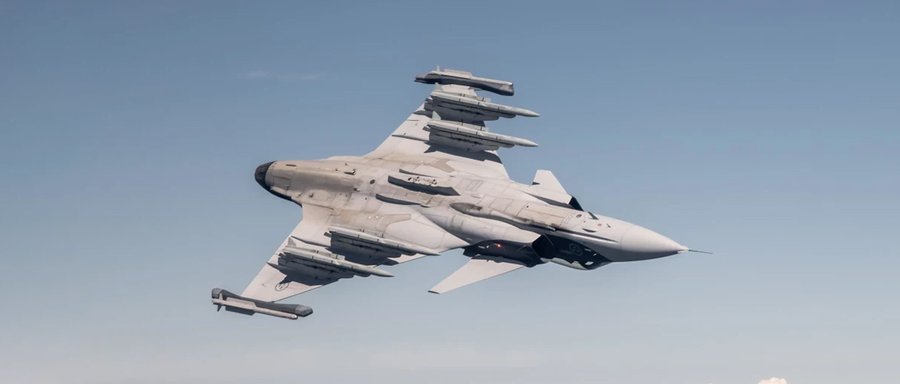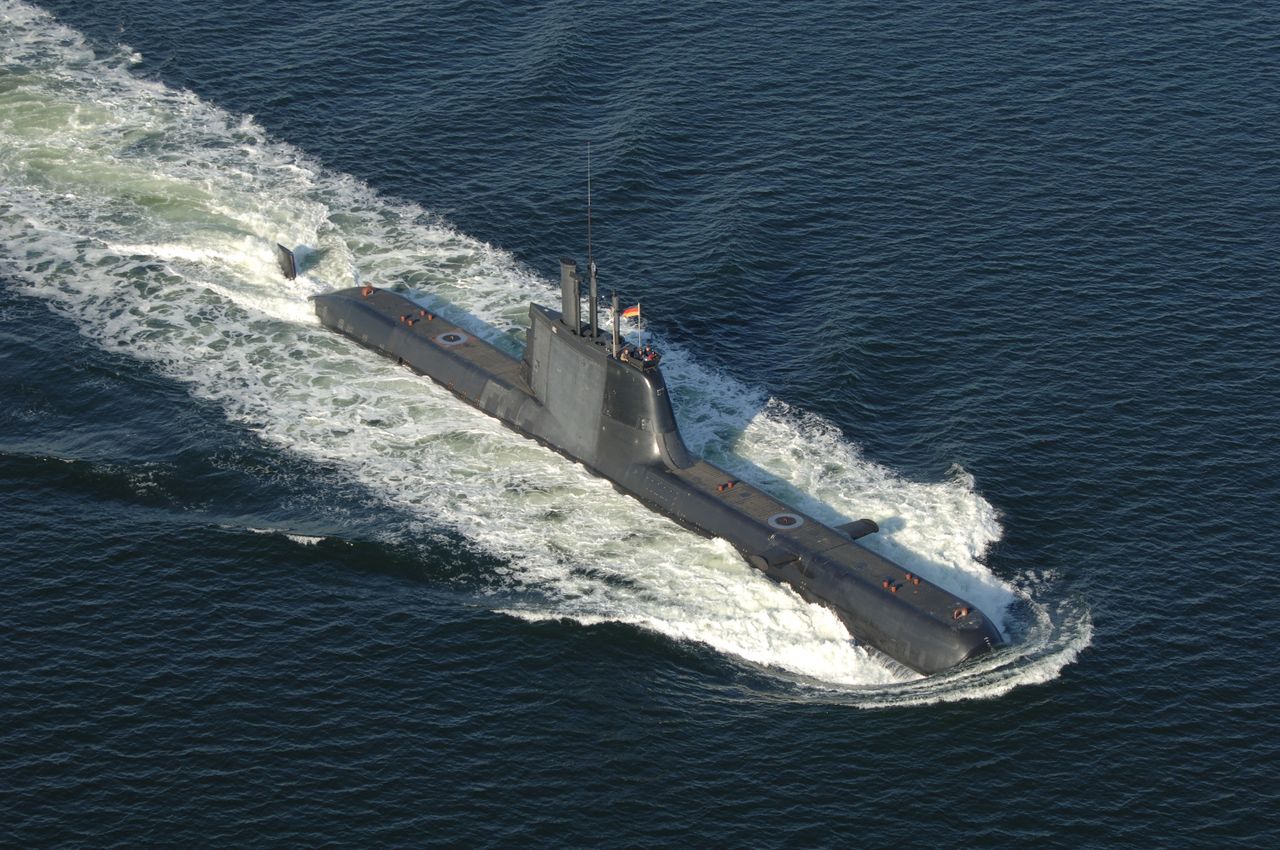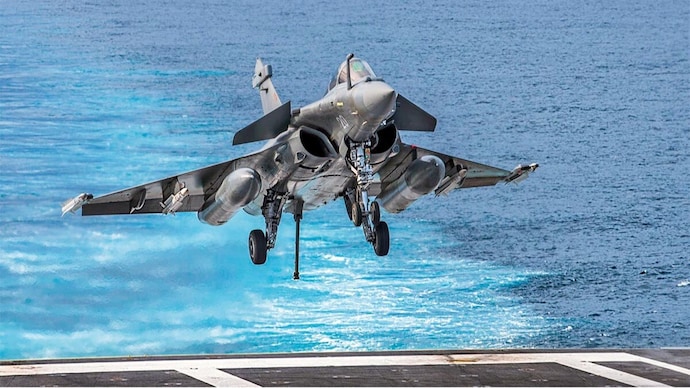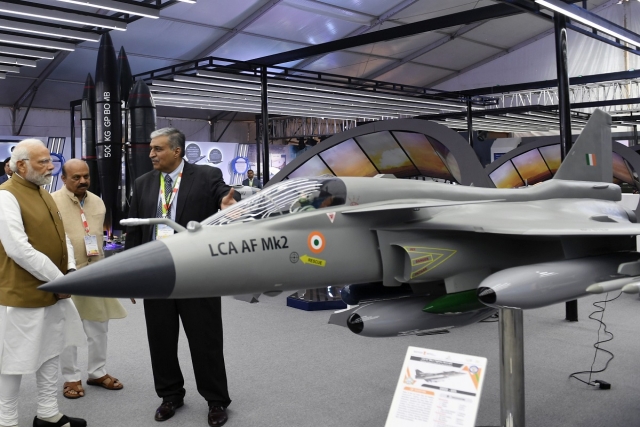SOURCE: RAUNAK KUNDE / NEWS BEAT / IDRW.ORG

As tensions continue to rise in regions operating T-72 and T-90 Main Battle Tanks (MBTs) due to geopolitical developments, Indian private sector companies are stepping up to offer their expertise in refurbishing and servicing these critical military platforms. With concerns mounting over the availability of spares and support, especially in light of the ongoing Ukraine-Russia conflict, companies like Director Airbornics Defence & Space (ADSL) are positioning themselves to address this pressing need.
One of the primary challenges these countries face is the limited availability of spares and maintenance support for their T-72 and T-90 MBTs, both of which are widely used across different armed forces. In this scenario, Indian companies are recognizing the opportunity to provide solutions that can ensure the operational readiness of these Armoured vehicles.
Continue readingSOURCE: IDRW.ORG TEAM

Air Commodore Kambiranda Muthanna Ponnappa (R), a distinguished figure who also helmed the National Flight Test Center, has put forth a compelling argument for continuous technological evolution in the Indian Air Force’s (IAF) upcoming Tejas Mk1A program. As discussions for follow-up orders of 100 Tejas Mk1A fighter jets are gaining momentum, Ponnappa emphasizes the imperative of integrating updated features into the aircraft as technology evolves, even during the production phase.
Ponnappa’s proposition is simple yet impactful: the Tejas Mk1A fleet should not be constrained by a uniform hardware and software standard throughout its lifecycle. In the fast-paced realm of technology, where advancements occur in shorter cycles, Ponnappa advocates for the incorporation of minor changes in software and hardware after every 40 aircraft are rolled out. This approach ensures that the Tejas Mk1A fleet remains at the cutting edge of technological innovation.
Continue readingSOURCE: IDRW.ORG TEAM

Saab, the Swedish aerospace and defense company, has thrown its hat into the ring by offering 114 state-of-the-art Gripen E fighters as part of its response to the upcoming Indian Air Force (IAF) Request for Proposal (RFP). The introduction of Gripen E could herald a new era of next-generation combat readiness, providing India with a cutting-edge air superiority advantage.
According to Mats Palmberg, Chairman and Managing Director of Saab India Technologies, the Gripen E offering encompasses both single-seater and two-seater variants of the fighter aircraft. Gripen E is no ordinary aircraft; it amalgamates a constellation of technological advancements that catapult it to the forefront of aerial warfare. This next-generation fighter aircraft delivers not only exceptional operational performance but also boasts an array of advanced features that are tailored to modern warfare’s multifaceted challenges.
Continue readingSOURCE: RAUNAK KUNDE / NEWS BEAT / IDRW.ORG

ThyssenKrupp Marine Systems (TKMS), a renowned global player in naval shipbuilding, has made a significant stride in India’s naval defense landscape by bidding on the Indian Navy’s Project-75-I tender. This ambitious project entails the supply of six next-generation submarines that will not only retain the design essence of their predecessors but will also be custom-crafted to align with the distinctive requirements of the Indian Navy.
The new submarines are poised to build upon the foundation laid by the Type 214 submarines, showcasing advanced capabilities that underscore high levels of automation, a substantial payload capacity, remarkable underwater endurance, and ergonomics optimized to cater to the Asian physique. If TKMS emerges victorious in securing the orders from the Indian Navy, this achievement would come with a distinctive classification, signifying the tailored advancements these submarines would bring to India’s maritime defense capabilities.
Continue readingSOURCE: RAUNAK KUNDE / NEWS BEAT / IDRW.ORG

India is embarking on a crucial step in its defense strategy by initiating the process to acquire 26 Rafale Marine fighter aircraft, also known as Rafale M, for its second aircraft carrier, INS Vikrant. This significant move aims to bolster the Indian Navy’s capabilities and fortify the country’s maritime defense framework.
The procurement process involves sending a Letter of Request (LOR) to the French government, formally expressing India’s interest in acquiring the Rafale M aircraft. Given that this transaction will be conducted through government-to-government channels, the issuance of the LOR is expected to take place within six to eight weeks following necessary clearances.
Continue readingSOURCE: RAUNAK KUNDE / NEWS BEAT / IDRW.ORG

The Indian Air Force’s (IAF) contemplation of placing an additional order for 100 Tejas Mk1A fighter jets is set to provide a significant boost to the indigenous fighter aircraft production line. This move not only strengthens the IAF’s operational capabilities but also supports the ‘Make in India’ initiative, fostering self-sufficiency in defence manufacturing and enhancing India’s position as a global player in the aviation sector.
In 2021, the IAF placed an order for 83 LCA-Tejas fighter jets, with 73 being upgraded single-seater Tejas Mk1A aircraft and an additional 10 twin-seater FOC (Final Operational Clearance) standard Tejas Mk1 jets.
Continue readingSOURCE: IDRW.ORG TEAM

In a significant move that could revolutionize amphibious operations and enhance maritime capabilities, India and the United Kingdom are engaged in talks to co-develop the next generation of super-powered hovercrafts. These amphibious landing craft have the potential to serve as versatile transport vessels for troops and equipment during amphibious operations, facilitating swift movement from ship to shore.
India’s coastal defense has been augmented by the deployment of Griffon Hoverwork 8000TD hovercrafts by the Indian Coast Guard since 2001. However, these hovercrafts were primarily assembled from complete knocked-down kits (CKDs) supplied by the manufacturer, with no local manufacturing process in place. The discussions between India and the UK aim to change this narrative by co-developing a technologically advanced and locally manufactured hovercraft that meets the evolving operational requirements of both nations.
Continue readingSOURCE: RAUNAK KUNDE / NEWS BEAT / IDRW.ORG
The Indian Air Force (IAF) is embarking on a dual-track approach to bolster its fighter jet fleet, with the procurement of 100 Tejas Mk1A aircraft and the upcoming Multi-Role Fighter Aircraft (MRFA) tender. The recent decision to procure an additional 100 Tejas Mk1A fighter jets, following the initial order of 83 in 2021, marks a significant stride towards self-reliance in defence manufacturing. The induction of these aircraft is set to commence in 2024, with a steady ramp-up in production over subsequent years.
However, this move towards strengthening the Tejas fleet should not be misconstrued as a substitute for the ambitious MRFA program. Under the Make in India initiative, the IAF’s plans to procure 114 fighter jets of foreign origin with complete Transfer of Technology (ToT) remain firmly intact.
Continue readingSOURCE: RAUNAK KUNDE / NEWS BEAT / IDRW.ORG

Undeterred by the recent crash of the TAPAS UAV during an experimental flight trial in nearby farmland from ATR Challakere, Karnataka, plans for user trials of the TAPAS UAV remain steadfast. The trials, originally slated to commence later this year, will proceed as scheduled, according to information obtained by idrw.org.
The recent crash marks the second instance of TAPAS experiencing an accident in the past four years, but preliminary reports suggest that the crash might not be linked to any technical defects, reinforcing the dedication to advancing the program.
Continue readingSOURCE: RAUNAK KUNDE / NEWS BEAT / IDRW.ORG

In a strategic move aimed at bolstering its aerial prowess and modernizing its fleet, the Indian Air Force (IAF) has taken a decisive step by placing orders for an additional 100 Tejas Mk1A fighter jets. The acquisition of 100 more Tejas Mk1A fighter jets will translate to an augmentation of five squadrons, making significant strides in replacing the retiring Mig-21 and Mig-29 squadrons.
The phased retirement of the Mig-21 and Mig-29 squadrons is a necessary step in the IAF’s evolution. The Mig-29, a stalwart in the IAF’s fleet for nearly four decades, is nearing the end of its airworthy lifespan. With around five to six years of operational viability left, the IAF’s plans to procure 21 unused Mig-29 aircraft from Russia faced a hurdle due to economic and trade sanctions imposed by Western and European countries.
Continue readingSOURCE: IDRW.ORG TEAM

Indian state-owned Hindustan Aeronautics Limited (HAL) is poised to meet its commitments by delivering 11 LCA-Tejas fighter jets by the end of the current financial year, scheduled for March 2024. The development aligns with the nation’s efforts to bolster its indigenous defense capabilities and strengthen its air force fleet.
Among the aircraft to be delivered are eight LCA trainer aircraft, alongside three Tejas Mk1A fighter jets. This delivery schedule reaffirms HAL’s dedication to meeting project deadlines, a crucial aspect in modern defense procurement and manufacturing.
Continue readingSOURCE: IDRW.ORG TEAM

India’s indigenous defense capabilities are set to take another leap forward with the upcoming production of the Light Combat Aircraft Mk2 (LCA-Mk2), a state-of-the-art fighter aircraft that promises to elevate the nation’s aerial prowess. The collaborative efforts of the Indian Air Force (IAF) and Hindustan Aeronautics Limited (HAL) are driving this ambitious project, with a rescheduled timeline aimed at ensuring higher indigenous content in the aircraft.
The green light for the LCA-Mk2 project was given by the Cabinet Committee on Security (CCS) in September 2022, with an allocated budget of ?9,000 crore. This advanced fighter jet is expected to hit the skies for its maiden flight in approximately three years, heralding a new era in India’s defense capabilities.
Continue readingSOURCE: RAUNAK KUNDE / NEWS BEAT / IDRW.ORG

The Indian Air Force (IAF) is taking decisive steps to halt the gradual decline in its fighter jet squadron numbers. In a strategic move to bolster its aerial prowess, the IAF is in the process of introducing an additional 90-100 Tejas Mk1A fighter jets, building on the initial order of 73 placed in 2021.
Earlier this year, a significant milestone was achieved as Defence Secretary Giridhar Aramane inaugurated the third production line of the Light Combat Aircraft (LCA) at the Hindustan Aeronautics Ltd. (HAL) facility in Nashik, Maharashtra. This new production line is poised to play a pivotal role in the induction of the Tejas Mk1A fighter jets into the IAF’s fleet.
Continue readingSOURCE: RAUNAK KUNDE / NEWS BEAT / IDRW.ORG
Argentina, a country without an active fighter jet fleet, is poised to make a crucial decision that could reshape its defence capabilities and strategic partnerships. As the nation deliberates over the purchase of 15 fighter jets by the end of this year, fierce competition is underway between two contenders: India’s LCA-Tejas and China’s JF-17 fighter jets. This choice carries significant implications for Argentina’s defence posture and global alliances.
The backdrop of this decision is complex, with multiple geopolitical factors at play. The United States Congress is considering transferring ex-Danish F-16A/B fighter jets to Ukraine, which is embroiled in a conflict with Russia. The possibility of these jets being offered to Argentina adds another layer of intrigue to the situation.
Continue readingSOURCE: RAUNAK KUNDE / NEWS BEAT / IDRW.ORG
The Defense Research and Development Organization (DRDO) recently issued a Request for Expression of Interest (REOI), DRDO has initiated the process of identifying and shortlisting potential Defense Collaborative Production Partners (DCPPs) for the development and production of Missile/Bomb weapon system projects under the Missile System and Subsystem (MSS) cluster.
The objective of this initiative is to forge strong partnerships with capable Indian companies to collaboratively bring to fruition the ambitious missile and bomb weapon system projects envisioned by DRDO.
Continue reading